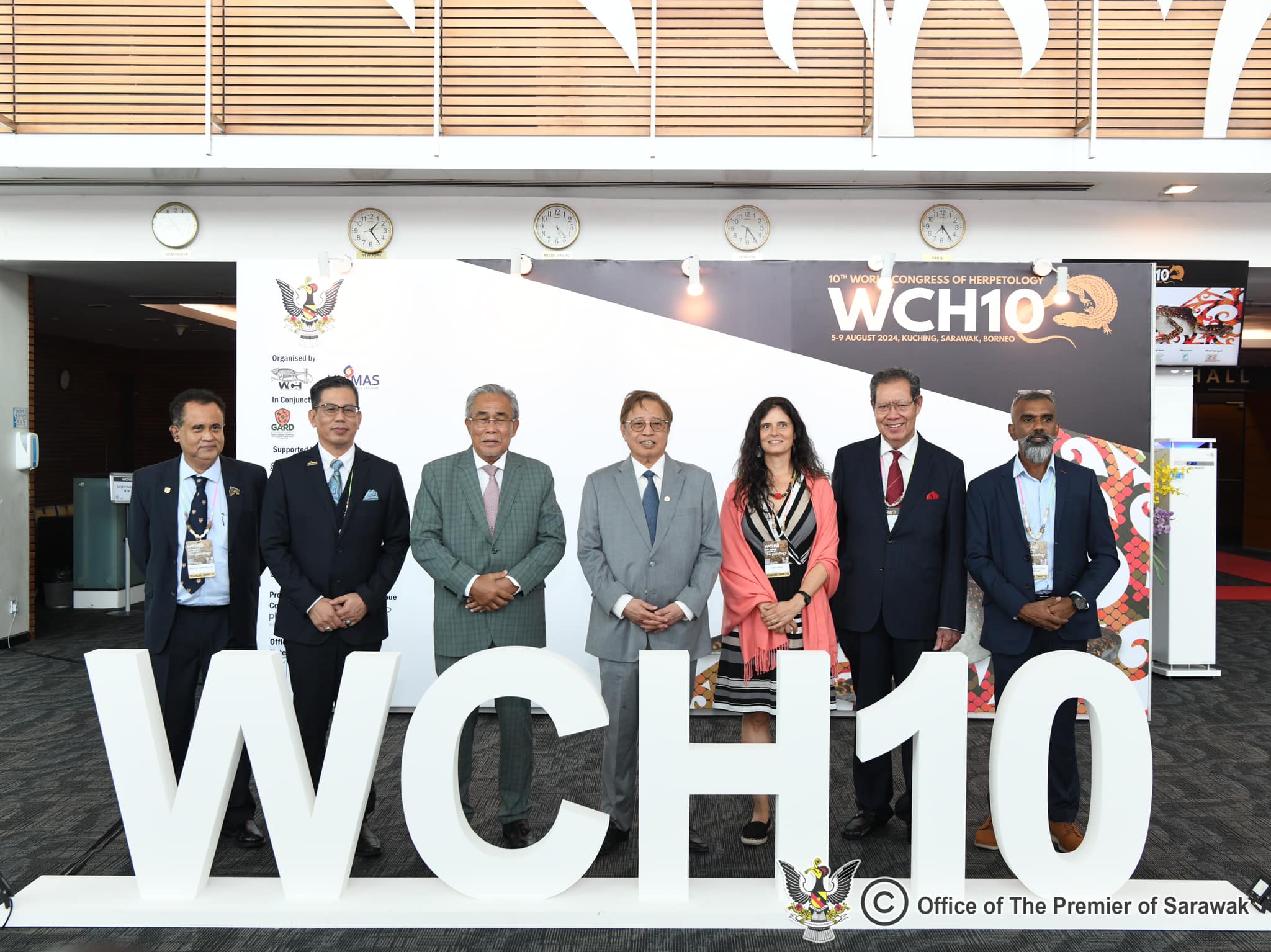OGOS 2024
Balancing Between Sustainable Development, Environmental Protection

KUCHING, Mon: Sustainable development requires balancing economic growth with responsible resource use and consumption patterns to protect the environment and mitigate the effects of climate change, Sarawak’s Premier, Datuk Patinggi Abang Haji Johari Tun Abang Haji Openg said here today.
In this vibrant but challenging environment, every aspect of the Sarawak Green Economy was dedicated to promoting economic growth while also preserving the delicate balance of its natural resources, he pointed out.
Sarawak recognised that economic growth was important and were committed to promoting “green” opportunities that would drive GDP growth while also reducing the impact of growth on the environment.
The Premier said this in his address when officiating at the 10th World Congress of Herpetology (WCH10) held at the BCCK, here.
About 1,400 delegates from 70 countries were in town to attend the Congress which officials said was the first hosted in South East Asia and much larger than the last one hosted by New Zealand.
The Premier said the Green Economy initiative of Sarawak had been a response to the challenges posed by climate change and the need to develop a lush landscape of sustainable opportunity and environmental protection, where nature and industry seamlessly intertwine through sustainable industries, such as renewable energy, eco-tourism, and sustainable agriculture.
He also said Borneo and biodiversity were synonymous and Sarawak's biological diversity, while remaining greatly understudied, was appreciated by the world over for its beauty and abundance, drawing hundreds of thousands of ecotourists to Sarawak annually.
“From pitcher plants to giant parasitic Rafflesia, from tiny frogs that breed only in these pitchers, to orangutans and the odd looking and oddly named proboscis monkey, Sarawak has something for every naturalist,” he further said.
He noted that scientists from various agencies, Sarawak Government’s Forest Department, Sarawak Forestry Corporation, international counterparts such as Smithsonian, as well as our own Institute of Biodiversity and Environmental Conservation (IBEC) UNIMAS, had in the past two decades described over a hundred new species of plants and animals, including 24 species of amphibians and reptiles.
“I believe many more such species are in the process of description,” he opined.
He also noted that over the past two years, specifically in 2023 and 2024, there had been an exercise to document 18 newly- discovered species, with 12 of them being frog species.
The others were cockroaches, beetles and lizards. Some of the people who are helping to describe these new species are in this very same room; the WCH10 Congress Director himself, Professor Indraneil Das, he added.
“These rich resources remain centred in Sarawak’s Totally Protected Areas (TPAs) forest lands established under the provisions of the National Parks Ordinance, 1998 and Wildlife Protection Ordinance, 1998,” he said.
Sarawak would continue to encourage science to discover all these new species and collaborate with researchers within Sarawak itself as well as those in Malaysia and internationally, he told the international delegates.
Earlier, Dr Judit Vörös Secretary General of the World Congress of Herpetology and Prof Dr Ahmad Hata Rasit, Vice-Chancellor of Universiti Malaysia Sarawak also spoke.
Also present were Datuk Haji Len Talif Salleh, Deputy Minister, Urban Planning, Land Administration and Environment, Tan Sri Datuk Seri Panglima Sulong Matjeraie, Chairman Board of Director UNIMAS and Abang Arabi Abang Airman, Chief Executive Officer, Sarawak Forestry Corporation.